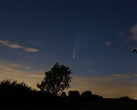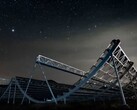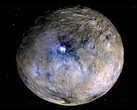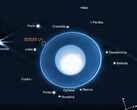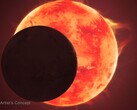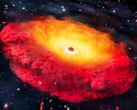A white dwarf is the dense stellar core, usually about the Earth’s size, that is left behind after a star runs out of nuclear fuel and collapses. Most white dwarfs are formed from the evolution of a single star. However, there are rare types of white dwarfs, formed from the merging of a white dwarf and another star. These types are so rare that only six have been previously discovered.
Now, an international team of astronomers has discovered a seventh white dwarf merger remnant called WD 0525+526. The team used Hubble’s Cosmic Origins Spectrograph, which allows studies in ultraviolet light, to make this discovery. WD 0525+526 has a temperature of almost 37,000 °F (20,500 °C) and a mass of 1.2 solar masses, making it hotter and more massive than the other merger remnants in its class.
Scientists can tell that a white dwarf is the product of a stellar merger when carbon is present in its atmosphere. This observation is usually detectable in optical light. But this proved difficult with WD 0525+526 as it is too hot for its atmospheric carbon to be abundant enough for any such detection.
As a result, initial observations in visible light suggested that WD 0525+526 was a “normal” white dwarf. Now that Hubble’s sensitivity to ultraviolet light has revealed a different origin for WD 0525+526, scientists are questioning how many “normal” white dwarfs might actually be merger remnants in disguise.
We would like to extend our research on this topic by exploring how common carbon white dwarfs are among similar white dwarfs, and how many stellar mergers are hiding among the normal white dwarf family. That will be an important contribution to our understanding of white dwarf binaries, and the pathways to supernova explosions. — Antoine Bedrad of the University of Warwick, a co-lead of the study.





